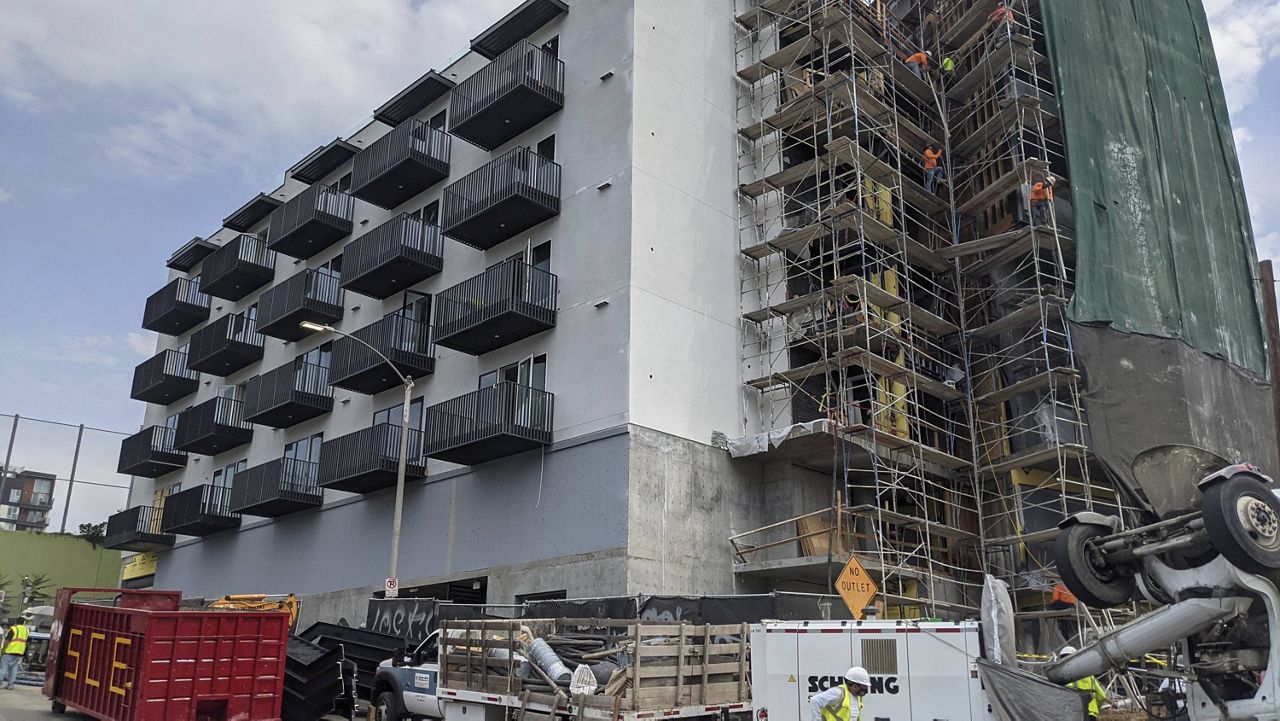LOS ANGELES — A lack of housing is largely to blame for LA’s ever-escalating home prices. The city is short almost 500,000 units, according to the Los Angeles Housing Department. But that’s poised to change with the city’s adoption of a new Plan to House LA, which could lead to the construction of more than 250,000 housing units within the next eight years.
“The city of Los Angeles faces perhaps the worst housing crisis in the country,” LA City Planning Assistant Betty Barberena said during a City Planning Commission meeting Thursday to adopt the plan.
Not only is LA the most rent-burdened and overcrowded major city, she said. It also has the fewest homes per adult of any region in the country.
Housing costs also exceed income growth.
Most job openings pay less than $30,000 per year, enabling a monthly rent payment of just $600, she said. That’s in stark contrast to the median home sales price in LA, which hit $915,000 in September, according to Redfin.
So the city is getting serious about building. In accordance with state law, every eight years, city planners are tasked with updating something called the Housing Element to develop a blueprint for housing production. That law requires local jurisdictions to identify their housing needs, constraints and opportunities and to come up with a plan to develop necessary housing.
All California jurisdictions conduct a Regional Housing Needs Assessment, or RHNA, that guides how much housing should be built. The RHNA for Los Angeles found 456,643 units are needed by 2029. As part of that assessment, individual jurisdictions must identify sites that can accommodate the needed housing. And if they can’t, those areas must be rezoned within three years to make up any shortfall.
The Plan to House LA includes an inventory of available sites for possible housing. While the city said there’s capacity to build all of the housing units that are needed, realistically 230,964 are likely to be constructed due to development impediments.
Meeting the area's housing needs, for affordable units in particular, will require rezoning.
Just 17% of residentially zoned land allows for multi-family housing development at densities that allow for affordable housing, Barberena said. But there are other barriers, as well: a lack of financial resources to build it, a process that is cumbersome and costly, increasing labor and material costs and NIMBYism.
For its Plan to House LA, the city conducted an exhaustive assessment of individual neighborhoods to determine “high opportunity areas” where more housing could be built. Those areas include the west side, the south and west San Fernando Valley and Northeast LA. Those places, however, also include significant environmental constraints, such as sea-level rise and fire hazards, city planners said. As such, the housing plan seeks to balance opportunity areas with ecological considerations.
City planners were quick to point out that just because a site was identified as a candidate for rezoning and building did not mean it would necessarily be developed. Many more sites were provided than are required, they said.
Ideal places for more affordable housing development are located along major corridors and near public transportation, according to the plan.
While adequate sites were primarily located in areas near downtown and in central Los Angeles, where higher-density multi-family housing units are already located, the plan encourages adaptive reuse of buildings that are not currently used for housing to be converted. It also calls for the building of backyard duplexes, allowing more than one accessory dwelling unit on larger lots and enabling affordable housing on faith-based properties and on public land.
About a quarter of LA’s black and Latinx residents live in areas that are highly segregated and impoverished. Almost half of LA’s residents with disabilities live in the most segregated and least-resourced communities. White residents, by far, have the greatest access to higher resource neighborhoods, the plan’s housing analysis found.
To address social inequity and to promote fair and affordable housing, the city followed six concepts in its Plan to House LA: housing stability/anti-displacement, housing production, access to opportunity, preventing and ending homelessness, improving the built environment and meeting the needs of all Angelenos.
“This is a plan that is not business as usual,” said Los Angeles Director of Planning Vince Bertoni. “This is perhaps the first time we’re talking about rezoning the city centered on environmental justice and the climate crisis we’re in.”
The plan is expected to take effect next February.



